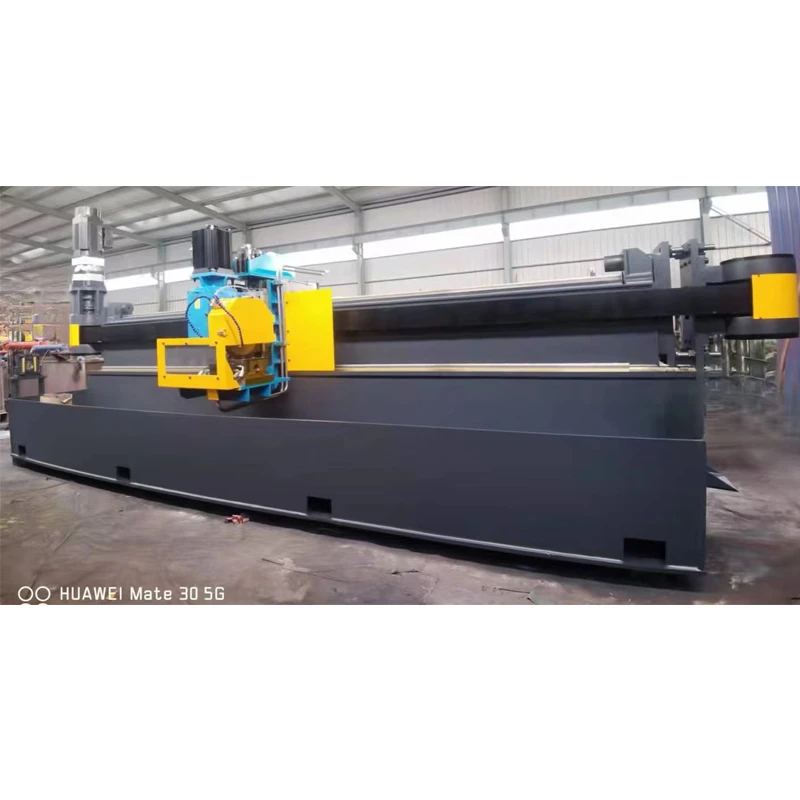sheet metal brake and shear
Understanding Sheet Metal Brake and Shear Tools
In the realm of manufacturing and metalworking, precision and efficiency are paramount. Sheet metal brake and shear tools play a crucial role in transforming raw sheets of metal into functional, carefully crafted parts. This article aims to delve into the importance, functionality, and application of these tools in various industries.
The Sheet Metal Brake
A sheet metal brake is a mechanical device used to bend, fold, or shape sheet metal into desired angles and forms. This tool is indispensable for fabricators who require precision and consistency in their bends. Sheet metal brakes come in various forms, including manual, hydraulic, and electric models, catering to different production needs.
Types of Bending Processes
1. Air Bending - The most common method involves using a V-shaped die. The sheet is placed above the die, and when pressure is applied, the metal bends into the desired angle. This process is favored for its speed and versatility, although it may require adjustments for specific angles.
2. Bottom Bending - This approach involves using a die with a specific angle (often equal to the desired bend angle) pressed against the sheet metal. The benefit of bottom bending is its accuracy; however, it tends to be slower than air bending.
3. Coining - This high-precision method uses a more rigid die to create deeper and sharper bends. Coining is often employed in applications where tight tolerances are essential.
The choice of method depends on the desired outcome, material type, and thickness. For instance, thinner sheets may require a different approach compared to thicker metals where more significant force is needed.
The Sheet Metal Shear
Sheet metal shears are tools designed to cut metal sheets into desired shapes with clean, precise lines. This equipment is vital in sheet metal fabrication, allowing for efficient material reduction and preparing sheets for further processing. Like brakes, shears come in several variants, including manual, powered, and CNC shears.
sheet metal brake and shear

Types of Shearing Processes
1. Guillotine Shears - These feature a straight blade that moves vertically to cut through sheets. They are suitable for straight cuts and can handle various materials, from thin aluminum to thicker steel.
2. Snips - Manual hand tools resembling scissors, snips are perfect for intricate cuts. They are commonly used for smaller projects or where electric shears may be cumbersome.
3. CNC Shears - Computer Numerical Control (CNC) shears offer advanced precision and productivity. They are programmed to make complex cuts, catering to high-volume production environments.
Key factors impacting the choice of shear include sheet thickness, type of material, and the complexity of the cuts required.
Applications in Industry
The versatility of sheet metal brakes and shears makes them invaluable across multiple industries. Some common applications include
- Automotive Manufacturing In producing vehicle components such as panels and frames, precision bending and cutting are critical. - HVAC Ductwork requires accurately bent pieces to ensure efficient airflow and installation. - Aerospace High standards of accuracy and quality control in bending and cutting components are non-negotiable due to safety regulations. - Construction From roofing panels to decorative elements, sheet metal work is commonplace in building applications.
Conclusion
In conclusion, understanding the functionality and applications of sheet metal brakes and shears is essential for anyone involved in metal fabrication. These tools enhance the efficiency, precision, and flexibility of production processes in various industries. As technology advances, we can expect developments that will further refine cutting and bending techniques, leading to even greater capabilities in sheet metal work.
Investing in high-quality brakes and shears, while keeping abreast of technological advancements, can significantly impact a facility's productivity and output quality. By harnessing the power of these essential tools, manufacturers can ensure they meet the demanding needs of today’s market while also preparing for the challenges of the future.
-
High Frequency Straight Seam Welded Pipe Production Line-BzZhou Xinghua Machinery Equipment Manufacturing Co., LTD.|Precision Welding, High EfficiencyNewsJul.30,2025
-
High Frequency Straight Seam Welded Pipe Production Line|BzZhou Xinghua|Precision Welding&EfficiencyNewsJul.30,2025
-
High Frequency Straight Seam Welded Pipe Production Line - BzZhou Xinghua|Precision Engineering&EfficiencyNewsJul.30,2025
-
High-Frequency Straight Seam Welded Pipe Production Line-BzZhou Xinghua Machinery Equipment Manufacturing Co., LTD.NewsJul.30,2025
-
High-Frequency Straight Seam Welded Pipe Production Line-BzZhou Xinghua Machinery Equipment Manufacturing Co., LTD.|Precision Manufacturing, High EfficiencyNewsJul.30,2025
-
High Frequency Straight Seam Welded Pipe Production Line-BzZhou Xinghua Machinery Equipment Manufacturing Co., LTD.|Precision Steel Pipe Manufacturing&Industrial EfficiencyNewsJul.29,2025


